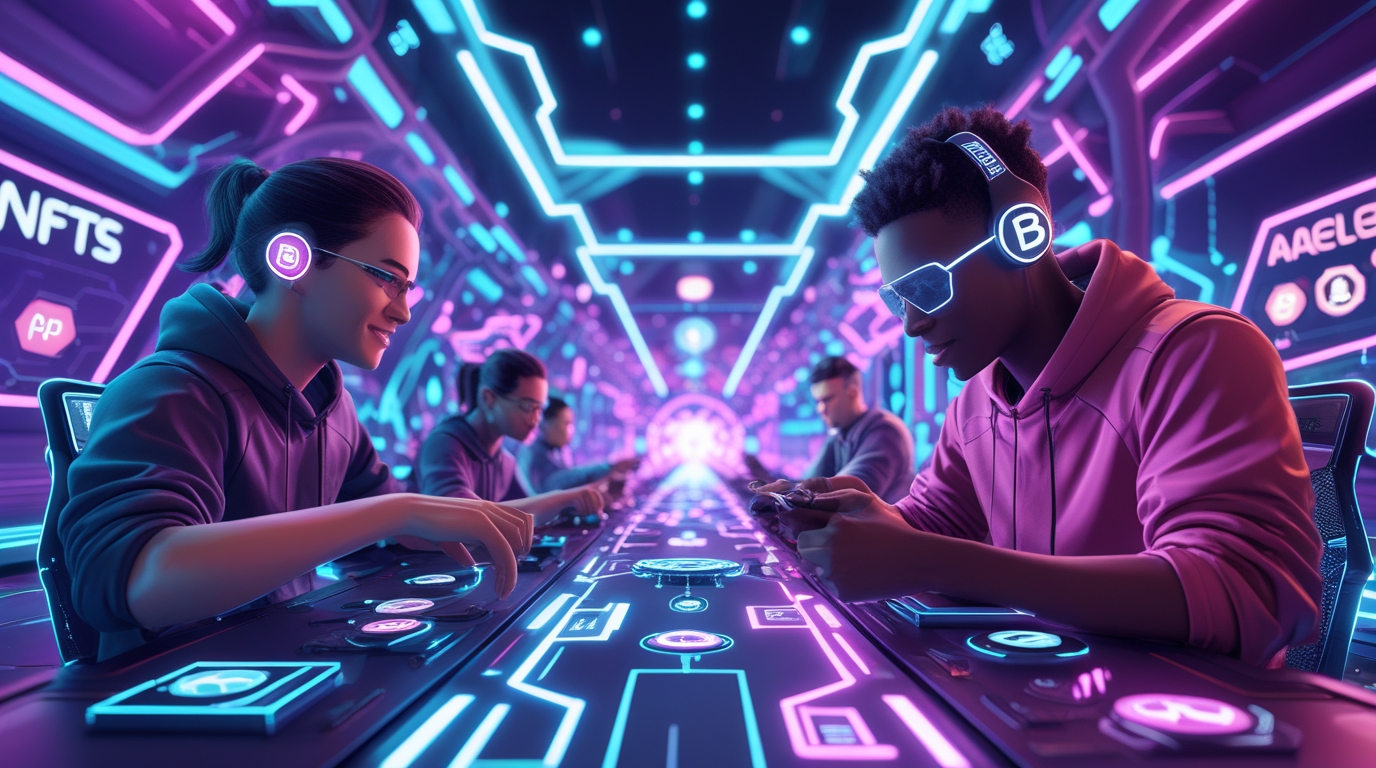Introduction
Blockchain gaming has evolved rapidly, introducing innovative economic models that attract players and investors alike. Play-to-Earn (P2E) was once the dominant model, offering gamers the ability to earn cryptocurrency and NFTs through gameplay. However, a new trend—Play-to-Airdrop (P2A)—is gaining traction as projects shift their focus toward community-driven incentives and sustainable growth.
While both models leverage blockchain technology to reward players, they differ significantly in their approach, impact, and long-term viability. This article explores the key differences between Play-to-Airdrop and Play-to-Earn, evaluating their pros, cons, and the future of blockchain gaming.
Understanding Play-to-Earn (P2E)
What is Play-to-Earn?
Play-to-Earn (P2E) allows gamers to earn digital assets, including cryptocurrencies and NFTs, by engaging in in-game activities. Pioneered by games like Axie Infinity, The Sandbox, and Decentraland, this model introduced financial incentives that attracted millions of players worldwide.
How P2E Works
- Players purchase or earn NFTs to participate in the game.
- Gameplay rewards include tokens or NFTs, which can be sold or reinvested.
- Players can trade, stake, or use assets in various in-game activities.
Pros of P2E
✔ Financial Incentives – Players can monetize their gaming time. ✔ Ownership & Control – NFTs allow users to own and trade in-game assets. ✔ Community Growth – Large player bases drive network effects and ecosystem expansion.
Cons of P2E
❌ High Entry Costs – Many P2E games require upfront NFT purchases. ❌ Inflationary Tokenomics – Over-reliance on token rewards leads to hyperinflation and price crashes. ❌ Sustainability Issues – Many projects struggle with balancing earnings and user retention.
Understanding Play-to-Airdrop (P2A)
What is Play-to-Airdrop?
Play-to-Airdrop (P2A) is an emerging model where players engage with a game not for direct earnings, but to accumulate points, reputation, or on-chain activity that later qualifies them for airdrops of governance tokens, NFTs, or in-game assets.
Unlike P2E, P2A focuses on long-term player engagement and ecosystem growth, using airdrops to distribute rewards retroactively.
How P2A Works
- Players interact with a game without immediate financial rewards.
- On-chain actions (e.g., participation, referrals, achievements) are tracked.
- Developers later airdrop tokens or assets to engaged users, rewarding commitment rather than speculative farming.
Pros of P2A
✔ Lower Barriers to Entry – No initial investment required. ✔ Stronger Community Engagement – Rewards dedicated players rather than short-term earners. ✔ Sustainable Tokenomics – Reduces inflationary pressures common in P2E models.
Cons of P2A
❌ Delayed Rewards – Players don’t earn immediate assets or crypto. ❌ Uncertainty – No guaranteed value or frequency of airdrops. ❌ Dependence on Developers – Players must trust the project to deliver fair and valuable rewards.
Comparing P2E vs. P2A
| Feature | Play-to-Earn (P2E) | Play-to-Airdrop (P2A) |
|---|---|---|
| Reward Model | Earn tokens & NFTs immediately | Earn airdrops based on engagement |
| Entry Cost | Often requires NFT purchase | Free to participate |
| Earning Potential | Direct financial rewards | Future airdrop-based rewards |
| Sustainability | High inflation risks | More balanced token distribution |
| Target Audience | Speculators & short-term players | Long-term community members |
| Risks | Unsustainable economy | Uncertain airdrop value |
Which Model is Better for Blockchain Gaming?
Both Play-to-Earn and Play-to-Airdrop have their strengths and weaknesses.
- P2E is ideal for players who want immediate earnings, but the sustainability of such projects remains a challenge.
- P2A fosters long-term player loyalty and project growth, though rewards take longer to materialize.
The Future of Blockchain Gaming
- Hybrid Models – Future games may combine P2E and P2A, offering immediate and long-term incentives.
- Governance Airdrops – More projects will use P2A as a fair distribution method for governance tokens.
- Regulatory Considerations – P2E faces scrutiny over financial incentives, while P2A may offer a compliance-friendly alternative.
- Game Quality Matters – Long-term success depends on enjoyable gameplay, not just financial incentives.
Conclusion
While P2E brought financial incentives to gaming, its sustainability challenges paved the way for P2A as a more balanced alternative. As blockchain gaming matures, projects must prioritize engagement over speculation to build lasting ecosystems.


